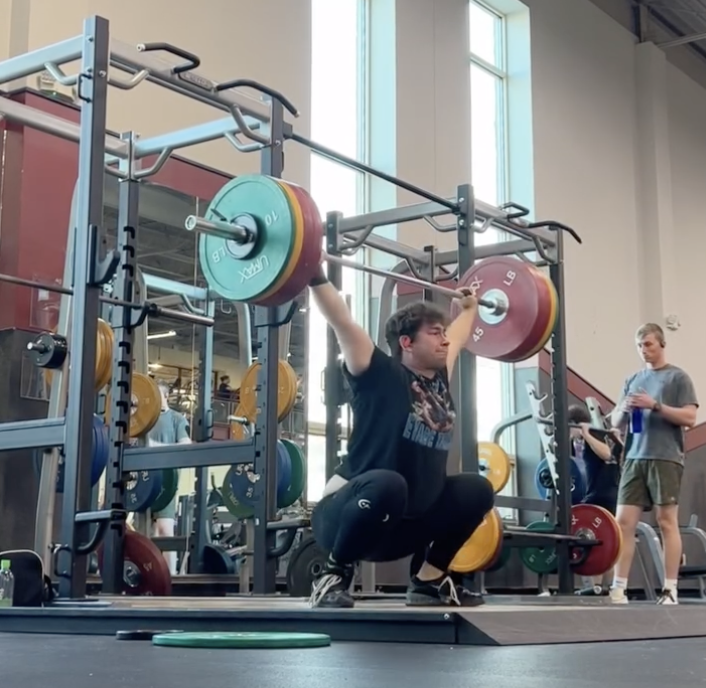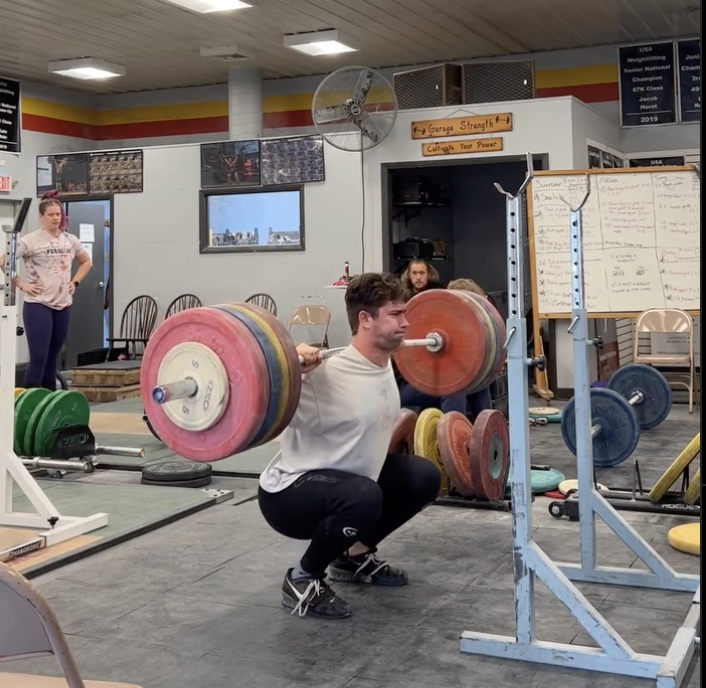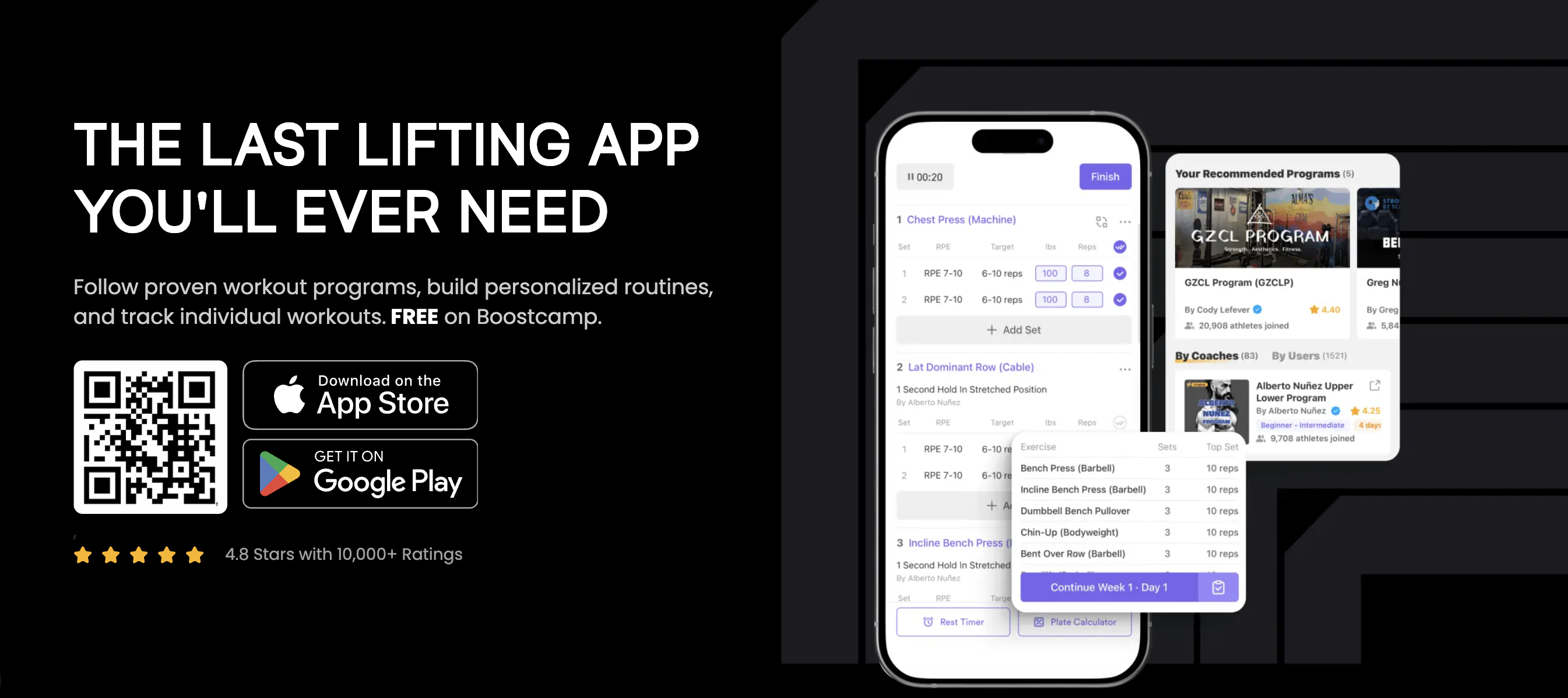The Importance of Ankle Mobility in Weightlifting
Written by The Boostcamp Editors
Enhance your lifts with improved ankle mobility
Weightlifting is a demanding sport that requires strength, power, and precision in order to excel and progress in it. While most athletes focus on developing their muscles and getting stronger, they often overlook the importance of things such as ankle mobility. Enhancing ankle mobility is crucial for weightlifters as it directly affects their range of motion, power output, and range of motion on lifts like barbell squats.
Our team at Boostcamp is going to take a more in-depth look at the importance of ankle mobility in weightlifting!
What is Ankle Mobility?

Ankle mobility refers to the ability of the ankle joint to move freely and efficiently through its full range of motion. Ankle mobility is something that involves two main movements: dorsiflexion and plantar flexion. Dorsiflexion is the movement of pulling the toes towards the shin, while plantar flexion is the movement of pointing the toes away from the shin.
Key Takeaways
Ankle mobility plays a crucial role in weightlifting, impacting range of motion, power output, and depth on a movement like squats
Understanding the anatomy and functions of the ankle joint is essential for improving ankle mobility.
Assessing ankle mobility through simple tests can help identify restrictions and determine the need for improvement.
Techniques such as dynamic warm-up exercises, strengthening exercises, and stretching routines can enhance ankle dorsiflexion for lifters.
Elevating plantar flexion and addressing eversion and inversion movements are also important for balanced movement and optimal lifting.
Preventing ankle injuries in weightlifting involves following best practices for injury prevention and knowing when to seek professional help.
The Crucial Role of Ankle Mobility in Weightlifting
Ankle mobility plays a crucial role in weightlifting, directly impacting an athlete's range of motion, power output, and other aspects. The range of motion in the ankle joint determines how deep an athlete can squat, which is essential for proper form and maximizing strength and muscle gains. Ankle dorsiflexion, the movement of pulling the toes towards the shin, is particularly important for achieving a full range of motion in weightlifting exercises such as squats and cleans. Adequate ankle mobility allows athletes to maintain a stable and balanced position throughout the lift, resulting in improved power output and overall performance.
Understanding Ankle Anatomy and Its Functions
To understand the importance of ankle mobility, it is essential to have a basic understanding of the anatomy and functions of the ankle joint. The ankle joint consists of two long bones, the tibia and the fibula, which connect to the talus bone in the foot. The talus bone sits on top of the calcaneus, commonly known as the heel bone. The ankle joint allows for movement in six different directions:
Dorsiflexion
Plantar flexion
Eversion
Inversion
Medial rotation
Lateral rotation
The muscles, tendons, and ligaments surrounding the ankle joint work together to provide support, stability, and mobility, allowing for efficient movement during weightlifting exercises. Understanding the structure and function of the ankle joint is essential for identifying any restrictions or limitations in ankle mobility and developing targeted strategies to improve it.
How Ankle Mobility Influences Weightlifting Performance
Ankle mobility has a direct impact on weightlifting performance. Adequate ankle dorsiflexion mobility, the ability to pull the toes towards the shin, is crucial for maintaining proper form and achieving a full range of motion in weightlifting exercises. Without sufficient range of motion in the ankle joint, athletes may struggle to perform exercises such as deep squats, front squats, and cleans, which can prevent solid progression in powerlifting and bodybuilding related sports.
Limited ankle mobility can lead to compensatory movements and poor squat mechanics, resulting in decreased power output and increased risk of injury. It can also affect the stability of the lift, making it more difficult to maintain balance and control.
By improving ankle mobility, weightlifters can enhance their squat depth, achieve proper alignment, and generate more power from their legs. This translates to improved performance in various weightlifting movements, allowing athletes to lift heavier weights and reach their full potential. Whether you are a beginner or an experienced lifter, focusing on ankle mobility can significantly enhance your weightlifting performance and overall strength gains.
Is Your Ankle Mobility Where it Should be?
Before delving into techniques and exercises to enhance ankle mobility, it is crucial to assess your current ankle mobility and see how good yours is. Simple tests can help identify any restrictions or limitations in ankle range of motion and provide valuable insight into the areas that need improvement. By regularly assessing your ankle mobility, you can track your progress and ensure that you are making improvements to your range of motion over time. Let's explore some of the simple tests that can be used to assess ankle mobility and determine the need for targeted mobility work.
Simple Tests to Measure Ankle Dorsiflexion
When assessing ankle mobility, one important measurement to consider is ankle dorsiflexion, the ability to pull the toes towards the shin. There are several simple tests that can be used to measure ankle dorsiflexion and identify any restrictions or limitations. One commonly used test is the Weight-bearing lunge test (WBLT) or Dorsiflexion Lunge Test (DFT).
In this test, the participant places their foot parallel to a wall, with the heel and big toe aligned with a tape measure. They then lunge forward, keeping the heel in contact with the floor, until the knee touches the wall. The distance between the wall and the tip of the big toe is measured in centimeters or inches. Each centimeter corresponds to approximately 3.6° of ankle dorsiflexion. A text table can be used to present the measurement data obtained from the test, allowing for easy comparison and tracking of range of motion improvements over time.
Another test that can be used to assess ankle dorsiflexion is the knee-to-wall test. In this test, the participant stands facing a wall, with their feet shoulder-width apart and their toes about 5-6 inches away from the wall. They then lean forward, keeping their heels on the ground, and try to touch their knees to the wall. The distance between the big toe and the wall is measured to determine ankle dorsiflexion. Using a foam roller or similar object can help provide a reference point for the distance measurement.
By regularly performing these simple tests, weightlifters can assess their ankle dorsiflexion and track their progress as they work on improving their range of motion.
Identifying Common Ankle Mobility Restrictions
Identifying common ankle mobility restrictions is essential for targeting specific areas that need improvement. Poor ankle mobility can be caused by a variety of factors, including muscle stiffness, joint restrictions, or previous injuries. Understanding the underlying causes of poor ankle mobility can help determine the most effective strategies for improvement.
Muscle stiffness is a common restriction that can affect ankle mobility. Tight calf muscles, in particular, can limit dorsiflexion and hinder proper movement in weightlifting exercises. Foam rolling and stretching exercises targeting the calves can help alleviate stiffness and improve ankle mobility.
Joint restrictions, such as limited range of motion in the ankle joint itself, can also contribute to poor ankle mobility. Physical therapy techniques, such as joint mobilizations and manual therapy, can be effective in addressing these restrictions and improving ankle mobility.
In some cases, previous ankle injuries may lead to long-term mobility restrictions. These injuries can result in scar tissue formation or joint instability, limiting range of motion. Physical therapists can provide targeted therapies and exercises to help rehabilitate the ankle and improve mobility.
By identifying and addressing common ankle mobility restrictions, weightlifters can target their mobility work more effectively and achieve greater improvements in ankle mobility and overall performance.
Techniques to Enhance Ankle Dorsiflexion for Lifters

Dynamic warm-up exercises like ankle circles and leg swings can help improve ankle dorsiflexion mobility. Strengthening exercises targeting the calves and anterior ankle muscles, such as toe raises and static lunges, are beneficial for enhancing ankle strength and mobility. Including stretching routines using a foam roller or specific stretches can also aid in improving flexibility in the ankle joint. Consistent mobility work focusing on ankle dorsiflexion is essential for lifters looking to enhance their performance and prevent injuries.
Dynamic Warm-Up Exercises for Ankle Mobility
Before engaging in weightlifting, it's crucial to prep your ankles with dynamic warm-up exercises. These movements help enhance ankle dorsiflexion mobility, improve ankle strength, and prevent injuries. Include exercises like toe raises, lunges, and using a foam roller to warm up your ankles effectively. By incorporating dynamic warm-ups, lifters can optimize their ankle joints for better range of motion improvements and increased power output during lifts. Start your weightlifting session on the right foot by prioritizing ankle mobility with these simple yet effective exercises.
Strengthening Exercises for Ankle Stability
To improve ankle stability for weightlifting, incorporate strengthening exercises like toe raises, static lunges, and calf raises. These exercises target the muscles surrounding the ankle joint, enhancing stability and reducing the risk of injury. Additionally, using a foam roller to loosen tight muscles in the calves and shin can improve ankle mobility. Consistent practice of these exercises will not only strengthen the ankle but also contribute to better overall performance in weightlifting sessions.
Stretching Routines for Improved Flexibility
Stretching routines play a vital role in enhancing flexibility for weightlifters. By targeting various muscles around the ankle joint, these routines help in improving ankle dorsiflexion mobility and overall range of motion. Incorporating exercises like toe raises, static lunges, and foam rolling can aid in loosening tight structures and promoting better movement patterns. Consistent focus on stretching not only enhances ankle strength but also reduces the risk of injuries associated with poor ankle mobility, ensuring a smoother weightlifting experience.
Elevating Plantar Flexion for Optimal Lifting
To optimize your lifting performance, focusing on elevating plantar flexion is vital. Strengthening the plantar flexors through specific exercises like toe raises can enhance your stability and power output. Incorporating plantar flexion work into your training routine, such as calf raises or using a kettlebell, can contribute to improved ankle strength and mobility. By targeting the balls of your feet and promoting plantar flexion, you can elevate your overall lifting capabilities and prevent ankle injuries.
Key Exercises to Strengthen the Plantar Flexors
To strengthen your plantar flexors, incorporate exercises like toe raises, calf raises, and heel walks. These movements target the muscles in the calf and the soleus to enhance plantar flexion strength. Additionally, performing seated calf raises and using a resistance band for added challenge can further build muscle endurance in the calves. Consistent practice of these exercises can lead to improved stability and power output in weightlifting while reducing the risk of ankle injuries.
Incorporating Plantar Flexion into Your Training Regime
To enhance your weightlifting performance, consider incorporating plantar flexion exercises into your training regime. Plantar flexion involves pointing the toes downward, activating the calf muscles and improving ankle strength. Including exercises like toe raises or calf raises can help target this movement pattern. By strengthening your plantar flexors, you can improve your overall stability and power output during lifts, enhancing your performance and reducing the risk of injuries in weightlifting. Make sure to include these exercises strategically in your training routine for optimal results.
Preventing Ankle Injuries in Weightlifting

It's vital to prioritize ankle injury prevention in weightlifting. Neglecting this aspect can lead to setbacks and hinder progress. Strengthening the ankles and improving their mobility through targeted exercises is key. By incorporating mobility work, proper warm-ups, and paying attention to form, lifters can significantly reduce the risk of ankle sprains or strains during training. Remember, a proactive approach to ankle health ensures you can continue pursuing your weightlifting goals safely and effectively.
Best Practices for Ankle Injury Prevention
Ensure proper warm-up before training to enhance ankle mobility and prevent injuries. Incorporate mobility exercises like calf stretches and ankle circles into your routine. Strengthen the muscles around the ankle joint to provide stability and support. Focus on maintaining good range of motion while performing weightlifting movements. Listen to your body and avoid overtraining to prevent overstressing your ankles. Regularly assess your ankle mobility and address any issues promptly to avoid long-term consequences.
When to Seek Professional Help for Ankle Issues
If you experience persistent pain or limited ankle mobility despite consistent mobility work, it might be time to consult a professional. Seek advice if you have a history of ankle injuries, as this can impact your weightlifting technique and performance. Watch out for any signs of weakness or instability in your ankles during lifts. A physical therapist can guide you with tailored exercises and treatments to address any underlying issues and prevent further damage. Prioritize your ankle health to elevate your weightlifting experience!
Workout Routines
When testing out ankle mobility, finding a good workout program to use alongside it is key. Keep in mind that good programs will help with your fitness journey, you would want to find a program that caters to your needs and guides you in the right direction, making sure that you are making the most gains. If you are looking to stay on track and continue with linear progression, then finding a good workout program is the key. Where do you look for a good workout program? Check out the Boostcamp App for some great programs.
Boostcamp is home to over 50 FREE workout programs that are written by renowned coaches and consist of strength, hypertrophy, or functional fitness, or both, from the push pull legs program all the way to upper lower, there are so many programs to choose from that can help fit your needs. However, with Boostcamp, you don’t have to just follow a pre-written program (although each program is written by a professional), you also can create your own program as well, and track your progress to make sure you are on the right track. That being said, when you are looking to incorporate some serious training to further your progress, then check out Boostcamp.
Conclusion
In conclusion, mastering ankle mobility is key to enhancing your weightlifting performance. Understanding the intricacies of ankle anatomy and function, along with incorporating targeted exercises and stretches, can significantly impact your lifting capabilities. By focusing on ankle dorsiflexion, stability, and balance, you can prevent injuries and optimize your lifting potential. Remember, a holistic approach to ankle mobility not only improves your performance but also ensures longevity in your weightlifting journey. Prioritize ankle health, and watch your strength and stability soar to new heights.
Be sure to follow Boostcamp on Instagram and subscribe on YouTube!


